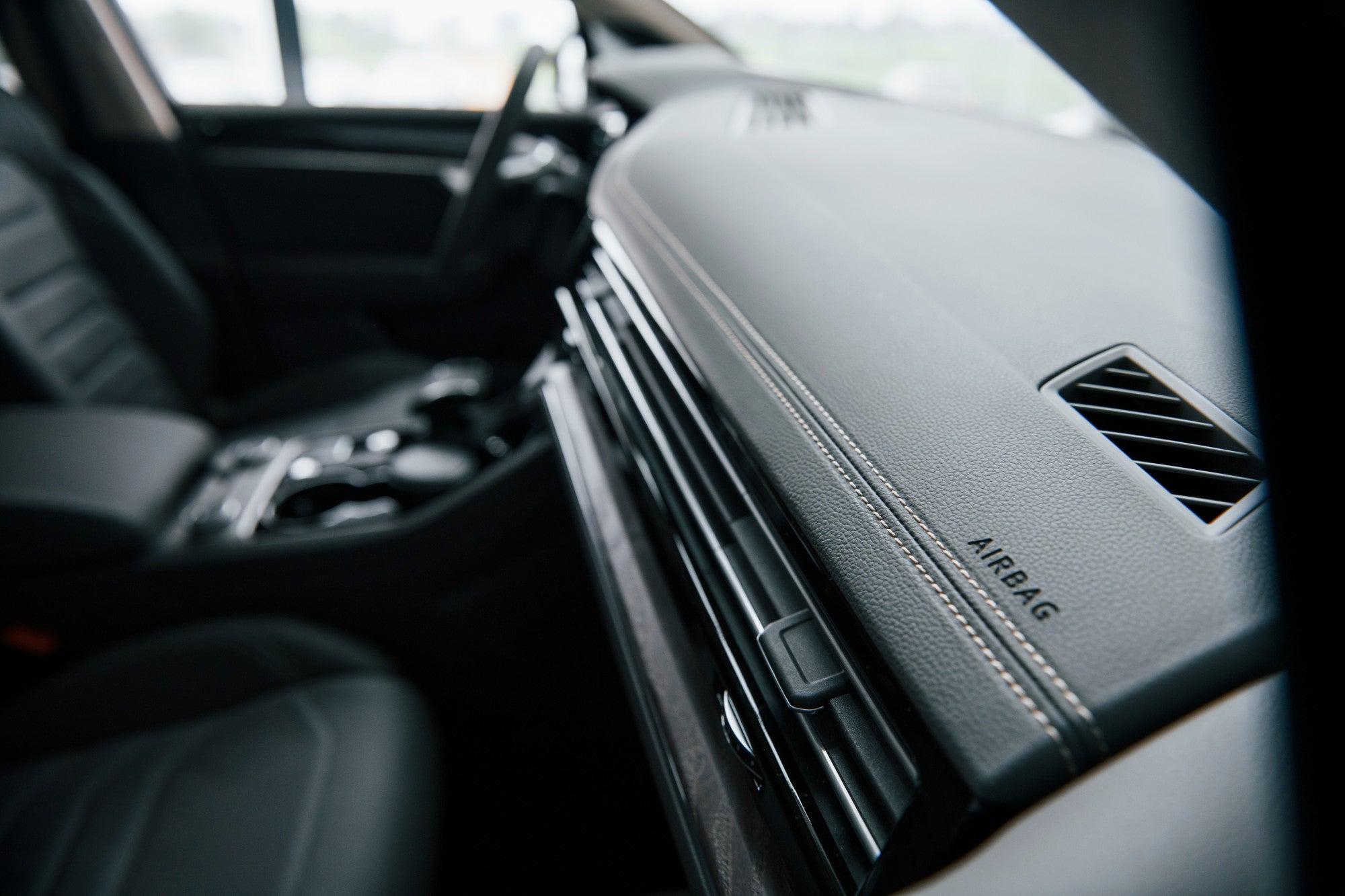-
Renault Koleos II airbag control unit repair
Regular price From €65,00Sale price From €65,00 Regular priceUnit price per -
Renault Koleos I airbag control unit repair
Regular price From €65,00Sale price From €65,00 Regular priceUnit price per
What should I pay attention to with Renault Koleos airbag control units?
The airbag technology used in the Renault Koleos varies depending on the model year and equipment, which is crucial for Renault Koleos airbag control unit repairs. A damaged or defective airbag control unit can impair the functionality of the entire safety system, which is why a professional repair with original functionality is essential. Airbag24 reliably repairs control units for all Renault Koleos generations.
The Renault Koleos, a versatile mid-size SUV, was produced over two main generations from 2008 to 2023. Each of these models, from the robust Koleos I to the comfortable Koleos II, integrated specific airbag control units tailored to the respective vehicle architecture and safety standards of the production period.
The development of the airbag system in the Renault Koleos reflected general advances in vehicle safety. While earlier models used basic airbag systems, later generations incorporated increasingly complex safety packages with a higher number of airbags and more intelligent deployment mechanisms. This requires a thorough understanding of the respective technology and specific software versions when repairing the airbag control unit for the Renault Koleos.
Which Renault Koleos generations are there?
The Renault Koleos was produced in two main generations, each with different airbag control units tailored to the specific platform and safety requirements. The continuous development of the safety system reflects technological advances from 2008 to 2023 and significantly influences the nature of Renault Koleos airbag control unit repairs.
The first generation of the Renault Koleos (Koleos I) was produced from approximately 2008 to 2015. This model, also known as the Renault Samsung QM5, originated as a Renault design but utilized significant Nissan technology. Produced in Busan, South Korea, this compact SUV featured specific airbag control units tailored to the equipment standards and safety concepts of the time. A facelift around 2013 brought minor updates, but the core architecture of the airbag system was largely unchanged.
The second-generation Renault Koleos II was unveiled at the Beijing Motor Show in 2016 and will be produced until 2023. This mid-size SUV is based on the modern CMF-CD platform of the Renault-Nissan Alliance and benefited from a comprehensive facelift in 2020. The airbag control units installed in the Koleos II are significantly more complex to meet the requirements of the 5-star Euro NCAP safety rating. The 2020 model update led to further software and hardware adjustments that must be taken into account when repairing a defective airbag control unit in the Renault Koleos.
How do I identify my Renault Koleos airbag control unit?
Renault Koleos airbag control units can be uniquely identified by the specific part number, the vehicle's year of manufacture, and often also by the vehicle identification number (VIN). Each generation and even facelift version of the Koleos uses specific control unit variants to ensure optimal compatibility and functionality of the safety system.
For a precise Renault Koleos airbag control unit repair, precise identification of the installed control unit is essential. The part number is usually printed directly on the airbag control unit or attached as a sticker. Sometimes this information can also be found in the vehicle information or using diagnostic software that requires Renault-specific hardware. This number provides information about the manufacturer, model series, and specific configuration of the airbag control unit.
It's important to note that despite external similarities, internal software versions and pin assignments may vary between different Renault Koleos models or trim levels. Therefore, accurate identification is crucial to applying the correct repair method for your defective Renault Koleos airbag control unit and ensuring full restoration of safety functions.
What airbag equipment does the Renault Koleos have?
The airbag configuration of the Renault Koleos varies significantly depending on the model year and the chosen trim level, with the focus always being on maximum occupant safety. While early models use solid basic airbag systems, newer generations feature enhanced safety packages with additional airbag modules and intelligent control functions coordinated by the airbag control unit.
The Renault Koleos I (2008-2015) came with a basic airbag system as standard. This typically included front airbags for the driver and front passenger, as well as side airbags and curtain airbags to provide protection in the event of a collision. The exact configuration could vary slightly depending on the selected trim level (e.g., "Night & Day"), but the airbag control unit of this generation was designed to reliably control these basic systems.
The Renault Koleos II (2016-2023) set new standards in safety and was awarded an impressive 5-star Euro NCAP safety rating. This second-generation, spacious mid-size SUV comes standard with a comprehensive array of airbags. These typically include adaptive front airbags, side airbags for the thorax and pelvis, and full-length head airbags for front and rear passengers. Higher trim levels, such as the "Bose® Edition" or "Paris," also feature knee airbags for the driver. The airbag control unit in the Renault Koleos II is a central unit that not only manages airbag deployment but is often also interconnected with other passive and active safety systems such as seat belt pretensioners, emergency braking assist, lane departure warning, or blind spot monitoring. A defect in the airbag control unit would therefore impair the function of this entire safety chain.
Regardless of the generation, the airbag control unit is a safety-critical component. A professional Renault Koleos airbag control unit repair is therefore essential to restore the full functionality of the protection system and ensure the safety of all occupants.

